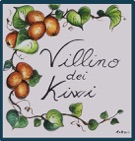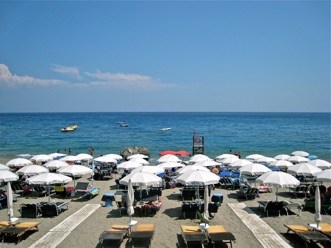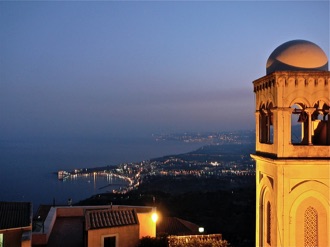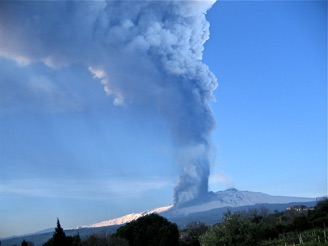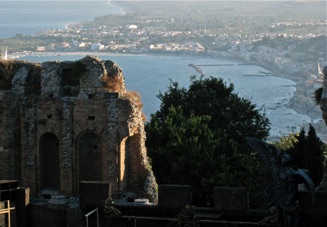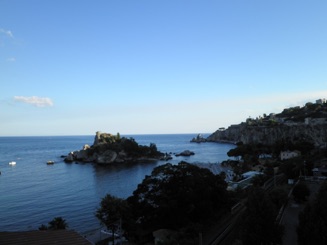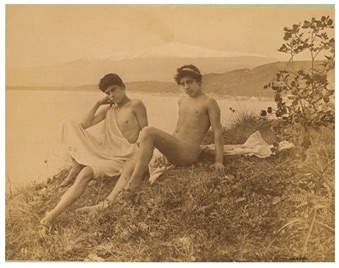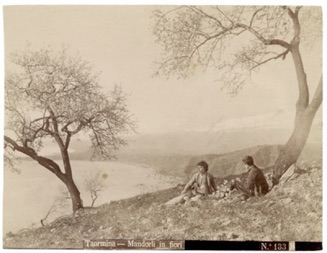Taormina
La perla del mediterraneo, una cittadina incastonata tra mare, cielo e vulcano.
Il turismo a Taormina è di casa: da più di centociquant’anni sono passati personaggi dello spettacolo, artisti, poeti, letterati, nobili e reali; fu un tedesco a scoprire Taormina al mondo: Otto Geleng vi giunse per curarsi da un malanno polmonare: passava il tempo a dipingere i paesaggi attorno a Taormina, con il mare, la neve dell’Etna e le piante fiorite.
Lo presero per pazzo a Berlino poichè mischiava e confondeva elementi di stagioni diverse. Scommise il suo vitalizio a Taormina con altri nobili tedeschi e lo vinse al loro arrivo: tutto quello che aveva dipinto era vero. Ed infatti a Taormina il turismo dura tutto l’anno, in estate più caotico e mondano, nel resto dell’anno rilassante e di classe.
Tra gli innumerevoli vicoli, scalette e nelle piazzette, si respira ancora l’aria della belle epoque e della dolce vita: al teatro Greco, il più bello al mondo, durante il Festival del Cinema che si svolge ogni anno dal 1955 a giugno e in cui vengono assegnati i prestigiosi Nastri d’Argento sono stati premiati negli anni attori quali Sophia Loren, Gregory Peck, Elizabeth Taylor, Audrey Hepburn, Robert De Niro.
Eventi di teatro, di lirica e concerti sono organizzati ogni anno dalla primavera all’autunno in questo splendido palcoscenico naturale.
Negozi, ristoranti, bar e maison de charme, completano questo stupendo quadro.
Poco sopra Taormina, seguendo la carrozzabile che portava alle case dove abitarono David Herbert Lawrence e Truman Capote si giunge a Castelmola, piccolo borgo sospeso nel cielo e da cui si gode una spettacolare vista che spazia fino a Siracusa.
Le spiagge
A Fiumefreddo nell’oasi naturale dopo il Castello degli Schiavi, reso noto al mondo per le ambientazioni di Francis Ford Coppola nel Padrino vi è una lunga spiaggia, sia libera che dotata di stabilimenti, che da Riposto, dove vi è il mercato del pesce e il porto turistico dell’Etna, passando da San Marco arriva fino a Giardini Naxos.
A Giardini Naxos le spiagge sono di sabbia, molto caotiche e dotate di ogni servizio.
A Taormina le spiagge sono:
- Isola Bella, stupenda isola-penisola dove la nipote della Regina Vittoria, Lady Florence de Trevelyan vi fece costruire una casina. E’ consigliabile affittare un lettino ma vi è anche una parte libera.
- Mazzarò è il salotto in costume di Taormina: una piccola baia di sabbia da cui è possibile raggiungere il centro di Taormina in funivia.
- Subito dopo, le spiagge ventilate di sabbia grossa di Spisone, Mazzeo, Letojanni (dove abitò Greta Garbo quando si ritirò dalle scene) e Fondaco Parrino sono in gran parte libere e di sabbia bianca.
Etna
Il vulcano più alto d’Europa, uno spettacolo alla vista delle sue innumerevoli eruzioni notturne che accendono le notti di questo tratto di costa siciliana.
E’ possibile salire fino al rifugio sapienza con la propria auto e godersi il panorama. Su prenotazione un servizio jeep con accompagnatore vi porterà fino ai crateri più alti.
Durante l’inverno è possibile praticare lo sci e lo snowboard grazie a degli impianti di risalita; la neve si confonde con il mare e vi sembrerà di sciare sull’acqua.Vi è anche uno snowpark attrezzato (Vulkan Snowpark).
Ferrovia Circumetnea
Un trenino diesel che percorre tutta la circonferenza del Vulcano, passando tra borghi mediovali, come Randazzo, incastonati nella lava, e nelle piante di uva (sono famosi i vini dell’Etna) Pistacchio (a Bronte, dove vi è il Castello di Lord Nelson) agrumeti e mandorli.
I passaggi a livello sono ancora a mano, un viaggio magico a ritroso nel tempo.
Riviera dei Ciclopi e Acitrezza
L’Etna nella mitologia greca era la casa dei Ciclopi dove vi lavoravano il ferro. Ulisse vi giunse e incontrò Polifemo che alla sua dipartita gli scagliò contro dei massi. Questi massi di lava enormi fanno da contorno alla Riviera dei Ciclopi, dove anche le spiagge sono di sabbia nera. Ad Acitrezza è ambientato il romanzo i Malavoglia di Verga. Il porticciolo dei pescatori è lo stesso da cui partì la “Provvidenza”.


